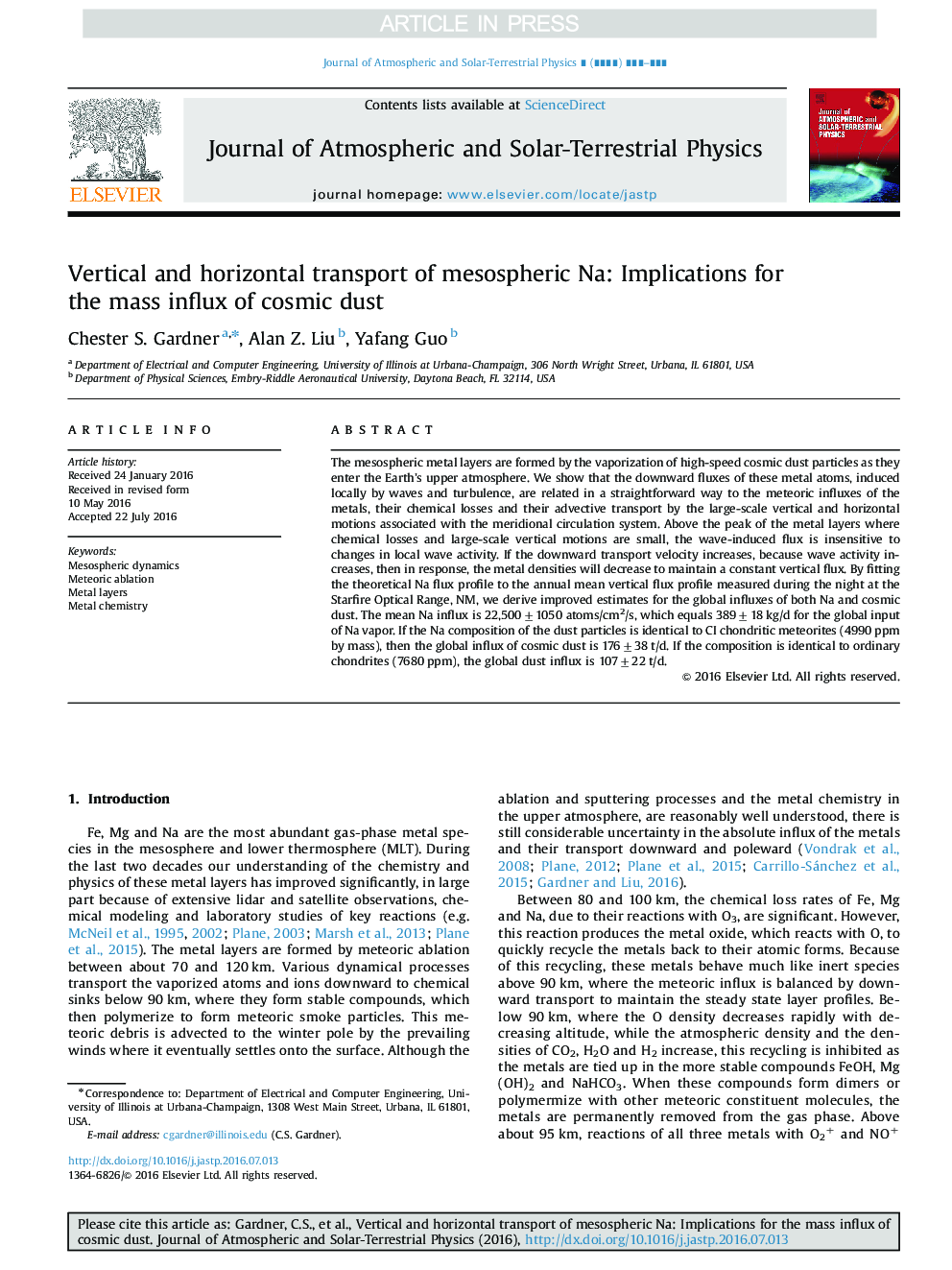| Article ID | Journal | Published Year | Pages | File Type |
|---|---|---|---|---|
| 5487577 | Journal of Atmospheric and Solar-Terrestrial Physics | 2017 | 11 Pages |
Abstract
The mesospheric metal layers are formed by the vaporization of high-speed cosmic dust particles as they enter the Earth's upper atmosphere. We show that the downward fluxes of these metal atoms, induced locally by waves and turbulence, are related in a straightforward way to the meteoric influxes of the metals, their chemical losses and their advective transport by the large-scale vertical and horizontal motions associated with the meridional circulation system. Above the peak of the metal layers where chemical losses and large-scale vertical motions are small, the wave-induced flux is insensitive to changes in local wave activity. If the downward transport velocity increases, because wave activity increases, then in response, the metal densities will decrease to maintain a constant vertical flux. By fitting the theoretical Na flux profile to the annual mean vertical flux profile measured during the night at the Starfire Optical Range, NM, we derive improved estimates for the global influxes of both Na and cosmic dust. The mean Na influx is 22,500±1050 atoms/cm2/s, which equals 389±18 kg/d for the global input of Na vapor. If the Na composition of the dust particles is identical to CI chondritic meteorites (4990 ppm by mass), then the global influx of cosmic dust is 176±38 t/d. If the composition is identical to ordinary chondrites (7680 ppm), the global dust influx is 107±22 t/d.
Keywords
Related Topics
Physical Sciences and Engineering
Earth and Planetary Sciences
Geophysics
Authors
Chester S. Gardner, Alan Z. Liu, Yafang Guo,
